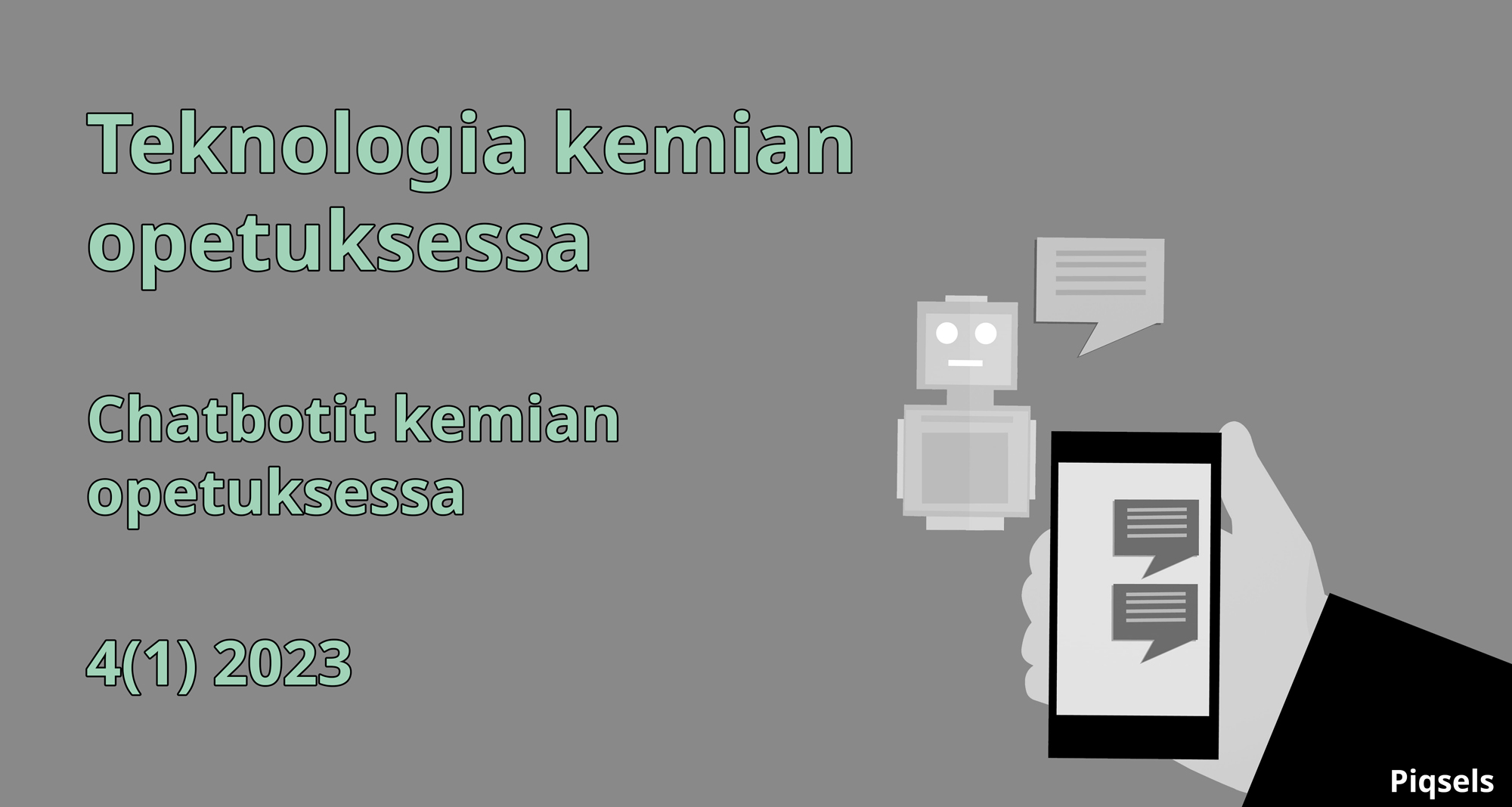Tekoäly-chatbotit kemiallisen informaation etsimisessä
Opetuksellisia näkökulmia SWOT-analyysin avulla
Avainsanat:
tekoäly, chatbot, tiedon etsiminen, kemian oppiminen, kemian opetus, TPACK, SWOTAbstrakti
Artikkeli tarjolla vain englanniksi.
Artificial intelligence (AI) chatbots are the latest advance in information technology. They are next-word predictors built on large language models (LLM) that offer the possibility to process and generate information. In this theoretical article, we provide educational insights of the possibilities and challenges of educational usage of AI chatbots. The insights were produced in the context of chemical information-seeking activities designed for chemistry teacher education. The analysis was conducted via a SWOT approach using technological pedagogical content knowledge framework (TPACK) to improve the accuracy. The analysis revealed several internal and external possibilities and challenges. The key insight is that AI chatbots will change the way people interact with information. For example, they enable the building of personal learning environments with ubiquitous access to information and AI tutoring. Their ability to support chemistry learning is impressive. However, processing of chemical information reveals the limitations of current AI chatbots not being able to process multimodal chemical information. There are also ethical issues to address. Despite the benefits, wider educational adoption of AI chatbots will take time. The obstacles hindering the adoption of AI chatbots can be removed, for example, through integrating LLMs to curricula, focusing on open-source solutions, and training teachers with modern information literacy skills. This research presents theory-grounded examples of how to support the development of modern information literacy skills in chemistry teacher education. Based on the conducted analysis, we predict that AI chatbots will be a major technological change agent towards inclusive and equitable quality lifelong learning for all.
Viittaaminen: Pernaa, J.; Ikävalko, T.; Takala, A.; Vuorio, E.; Pesonen, R.; Haatainen, O. Artificial Intelligence Chatbots in Chemical Information Seeking: Educational Insights through a SWOT analysis. Preprints 2023, 2023121066. https://doi.org/10.20944/preprints202312.1066.v1
Tiedostolataukset
Julkaistu
Numero
Osasto
Kategoriat
Lisenssi
Copyright (c) 2023 Johannes Pernaa, Topias Ikävalko, Aleksi Takala, Emmi Vuorio, Reija Pesonen, Outi Haatainen

Tämä työ on lisensoitu Creative Commons Nimeä 4.0 Kansainvälinen Julkinen -lisenssillä.





